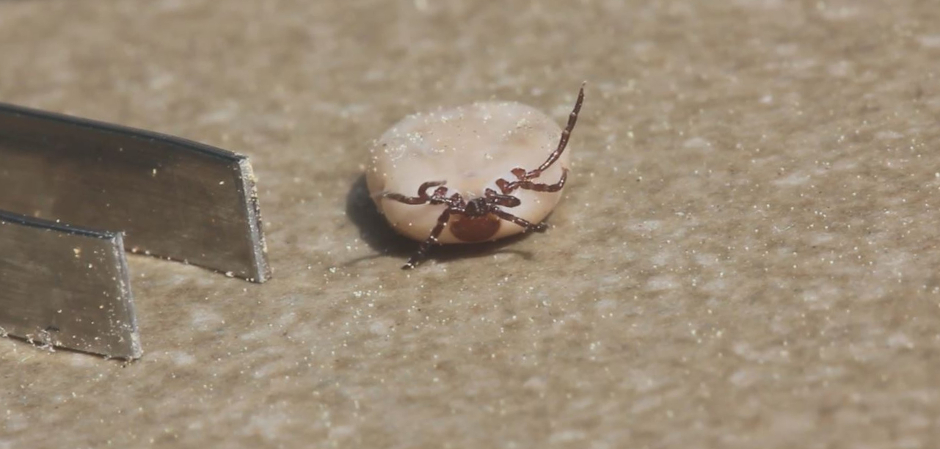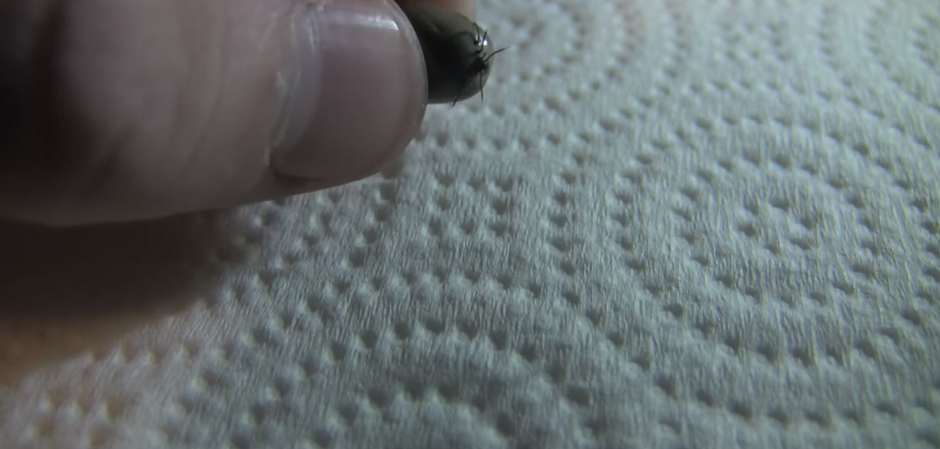How to Get Rid of Ticks
An educational guide to help you get rid of unwanted Ticks.
How To Get Rid Of Ticks
Ticks may be a part of nature, but that doesn’t mean you want them hanging around in your yard, in your home, or even on you. Getting a single tick off of yourself can be annoying enough, but if you want to make sure this doesn’t happen regularly, you need to take steps to get them away from your property. The basic theory behind getting rid of ticks is treating every single possible place they may be, including your yard and your pet.

Get Ticks Off Your Pets And Keep Them Off
For most people, the first step to getting rid of ticks is making sure there aren’t any on your pets and that none will go on them. Pets are particularly attractive to ticks because of their long fur that makes them hard to spot, but there are numerous tick treatments available. You can give your dog a bath designed to kill fleas, ticks, and other insects; use a spray; or apply some drops. Just be sure to choose the treatment for your pet appropriately based on their age, weight, and health.
Get Rid Of Ticks Inside
While it is expected to have the occasional tick outside, especially if you live by the woods or in areas with high grass, seeing them inside is never a good thing. Remember that you need to treat for ticks immediately since a single female is capable of laying thousands of eggs at once. In the case of a severe infestation, getting rid of all the ticks may take up to eight weeks. You should be prepared to use multiple treatment methods as well. It is wise to turn to a professional for getting rid of indoor ticks because it can be so complicated; they will have the experience and tools necessary to take care of the issue in as little time as possible.
There are a range of insecticides available for indoor use, including dusts, aerosols, and liquids. Ideally, you will use a regular insecticide as well as an IGR, insect growth regulator. The first of these kills the adults while the second affects the ability of the young to grow. Always follow the instructions on the product you use for safety precautions and be positive that it is labeled for indoor use. Just a handful of areas you should consider applying the insecticides to include the bottom of and underneath furniture, door and window frames, along as well as behind baseboards, and by crevices and cracks. Most insecticides that target ticks aren’t safe to use around children or pets so be careful in applying them and consider washing pet bedding (and your own) in hot water.
Do You Have Ticks Outside?
Before you can get rid of ticks outside, you need to confirm that they are there and pinpoint the infested areas. A simple way to do this is putting a white towel on a rod or dowel and dragging it over areas you think are infested. The ticks should cling to the towel, letting you know that your hunch was correct.

The idea of treating your entire yard for ticks can be daunting, which is why many people just leave it to the professionals. The good news is that this is entirely possible; you just need to know which areas are most attractive to these pests. In your yard, ticks are most likely to be found underneath and around trees and bushes, around patios and decks, and in any areas with leaf debris. Remember that to keep ticks from affecting you, you need to treat all areas of your yard that your pet may use, you may use, or even a stray animal might go (which pretty much covers everywhere).
Get Rid Of Ticks Outside
As with indoor tick problems, the outdoor ones should always be tackled with both an insecticide and the insect growth regulator. This way you can kill all the adults and prevent the young ticks from reaching their sexual maturity. To apply the products you choose outside, follow their instructions. In most cases, you will be able to use a hand pump sprayer or back sprayer to apply it. These methods will ensure that the application of the insecticide is uniform and reaches everywhere as the tiny particles of liquid will settle farther back than you can reach and deep down into the plants.
Be prepared to treat for ticks multiple times, especially if you live in an area with a lot of them or your property is very appealing. Some people may even need to do monthly treatments between spring and the very first frost.
Keeping Yourself Safe
There are also some simple things you can do to make yourself less attractive to ticks and reduce your chances of getting them. Opt for light clothing so the ticks are easy to spot and always wear long pants and long shirts with cuffs that fit tight so the ticks can’t get in. Consider spraying your pet’s bedding with a pet-safe formula that repels ticks (these are frequently natural) and consider a personal bug repellent if going to a tick-infested area.
Ticks may be a part of nature, but that doesn’t mean you want them hanging around in your yard, in your home, or even on you. Getting a single tick off of yourself can be annoying enough, but if you want to make sure this doesn’t happen regularly, you need to take steps to get them away from your property. The basic theory behind getting rid of ticks is treating every single possible place they may be, including your yard and your pet.

Get Ticks Off Your Pets And Keep Them Off
For most people, the first step to getting rid of ticks is making sure there aren’t any on your pets and that none will go on them. Pets are particularly attractive to ticks because of their long fur that makes them hard to spot, but there are numerous tick treatments available. You can give your dog a bath designed to kill fleas, ticks, and other insects; use a spray; or apply some drops. Just be sure to choose the treatment for your pet appropriately based on their age, weight, and health.
Get Rid Of Ticks Inside
While it is expected to have the occasional tick outside, especially if you live by the woods or in areas with high grass, seeing them inside is never a good thing. Remember that you need to treat for ticks immediately since a single female is capable of laying thousands of eggs at once. In the case of a severe infestation, getting rid of all the ticks may take up to eight weeks. You should be prepared to use multiple treatment methods as well. It is wise to turn to a professional for getting rid of indoor ticks because it can be so complicated; they will have the experience and tools necessary to take care of the issue in as little time as possible.
There are a range of insecticides available for indoor use, including dusts, aerosols, and liquids. Ideally, you will use a regular insecticide as well as an IGR, insect growth regulator. The first of these kills the adults while the second affects the ability of the young to grow. Always follow the instructions on the product you use for safety precautions and be positive that it is labeled for indoor use. Just a handful of areas you should consider applying the insecticides to include the bottom of and underneath furniture, door and window frames, along as well as behind baseboards, and by crevices and cracks. Most insecticides that target ticks aren’t safe to use around children or pets so be careful in applying them and consider washing pet bedding (and your own) in hot water.
Do You Have Ticks Outside?
Before you can get rid of ticks outside, you need to confirm that they are there and pinpoint the infested areas. A simple way to do this is putting a white towel on a rod or dowel and dragging it over areas you think are infested. The ticks should cling to the towel, letting you know that your hunch was correct.

The idea of treating your entire yard for ticks can be daunting, which is why many people just leave it to the professionals. The good news is that this is entirely possible; you just need to know which areas are most attractive to these pests. In your yard, ticks are most likely to be found underneath and around trees and bushes, around patios and decks, and in any areas with leaf debris. Remember that to keep ticks from affecting you, you need to treat all areas of your yard that your pet may use, you may use, or even a stray animal might go (which pretty much covers everywhere).
Get Rid Of Ticks Outside
As with indoor tick problems, the outdoor ones should always be tackled with both an insecticide and the insect growth regulator. This way you can kill all the adults and prevent the young ticks from reaching their sexual maturity. To apply the products you choose outside, follow their instructions. In most cases, you will be able to use a hand pump sprayer or back sprayer to apply it. These methods will ensure that the application of the insecticide is uniform and reaches everywhere as the tiny particles of liquid will settle farther back than you can reach and deep down into the plants.
Be prepared to treat for ticks multiple times, especially if you live in an area with a lot of them or your property is very appealing. Some people may even need to do monthly treatments between spring and the very first frost.
Keeping Yourself Safe
There are also some simple things you can do to make yourself less attractive to ticks and reduce your chances of getting them. Opt for light clothing so the ticks are easy to spot and always wear long pants and long shirts with cuffs that fit tight so the ticks can’t get in. Consider spraying your pet’s bedding with a pet-safe formula that repels ticks (these are frequently natural) and consider a personal bug repellent if going to a tick-infested area.
About Us
We are the Pest Education Network, a non-profit organization that focuses on wildlife and pest removal education. Our approach utilizes Integrated Pest Management, a strategy advocating prevention and humane methods.


